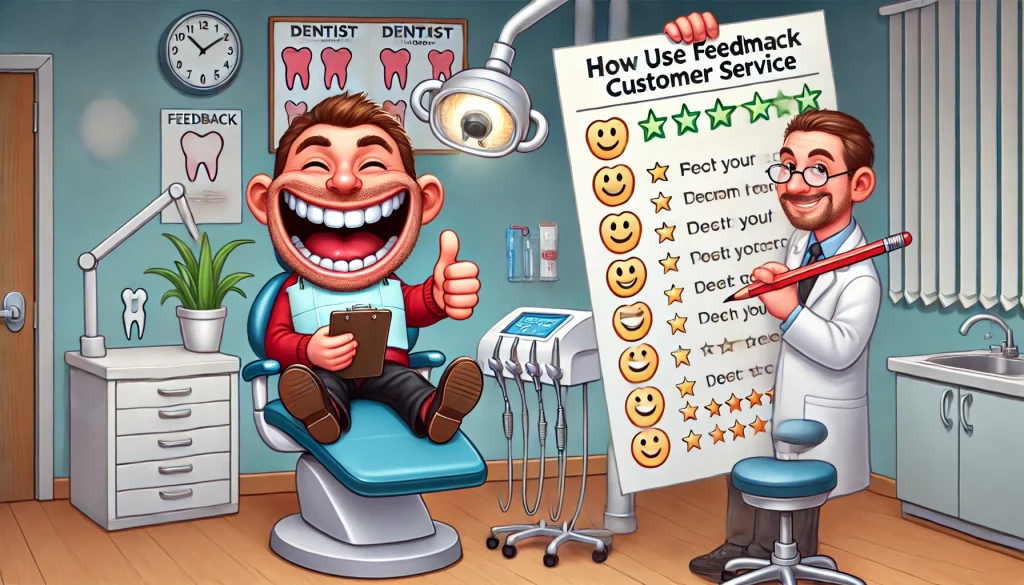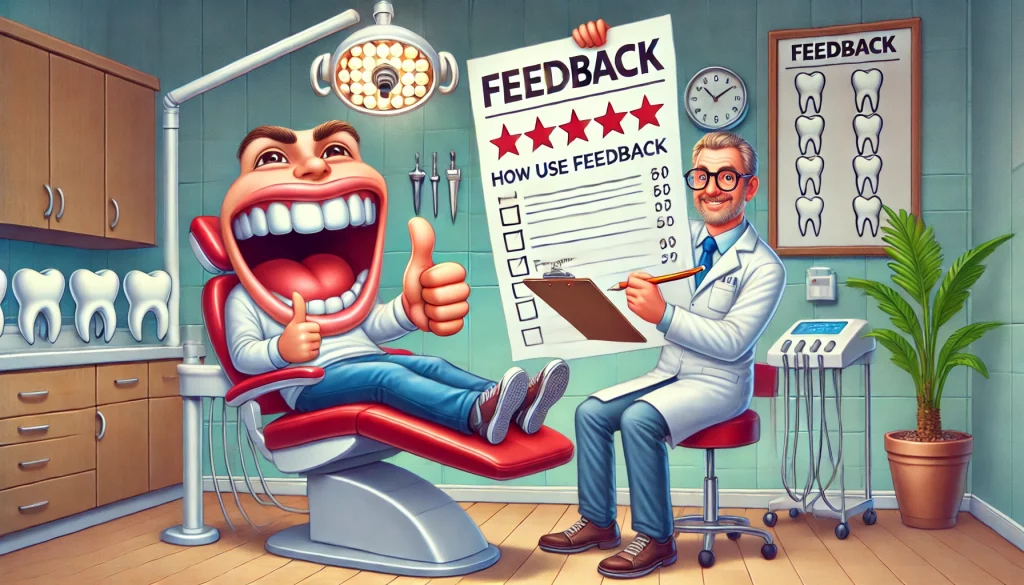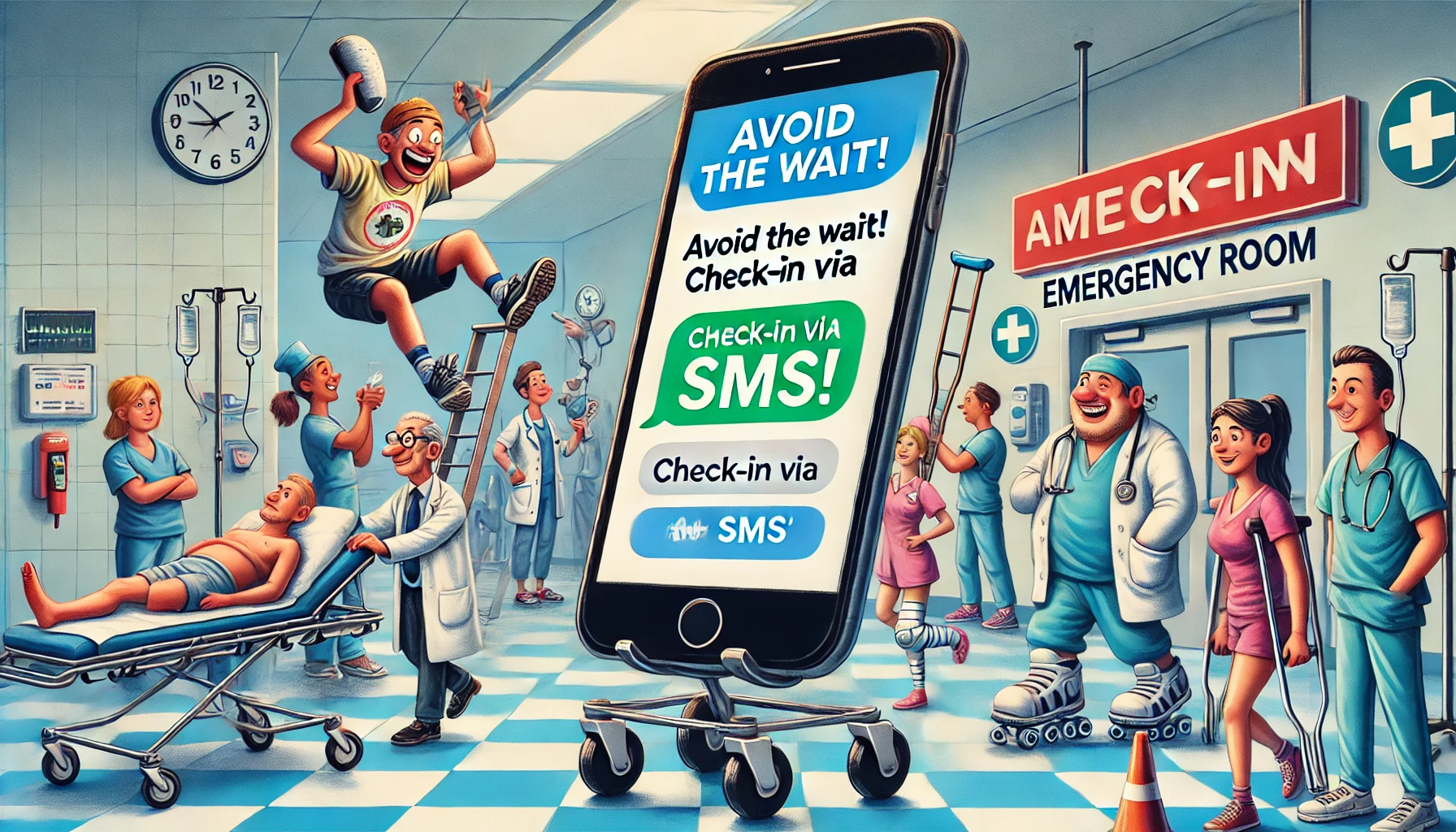How to use feedback to improve customer service for dentists: Enhance patient satisfaction

The significance of online reviews cannot be overstated when it comes to boosting your practice’s visibility in search results. However, the true value lies in the quality of these reviews, which can sway potential patients in your favor over competitors.
Understanding how to effectively utilize feedback is crucial for improving customer service in the dental field. Below, we explore strategies for interpreting customer feedback and leveraging it to enhance performance.
The importance of patient feedback
Patient feedback is a vital component in the continuous improvement of dental practices. It provides insights into patient experiences, helps identify areas needing enhancement, and offers a direct line of communication between patients and practitioners.
By actively seeking and utilizing feedback, dental practices can ensure they meet and exceed patient expectations, fostering loyalty and trust.
A study by the Journal of Dental Education found that 87% of patients are more likely to return to a practice that actively seeks and acts on their feedback, underscoring the importance of patient engagement in driving practice success.
Benefits of collecting patient feedback
Collecting patient feedback offers numerous benefits:
Improved patient care: Feedback highlights specific areas where patient care can be enhanced. A report by the American Dental Association noted that practices implementing patient feedback saw a 15% improvement in patient care quality.
Increased patient satisfaction: Understanding patient needs and concerns helps tailor services to enhance satisfaction. According to Patient Experience Journal, dental practices that actively adjust their services based on feedback experience a 20% increase in patient satisfaction scores.
Enhanced reputation: Positive feedback can improve your practice’s reputation and attract new patients. A study by BrightLocal revealed that 91% of consumers trust online reviews as much as personal recommendations, making positive patient feedback invaluable.
Operational efficiency: Identifying common issues can lead to more efficient and effective practice operations, reducing patient wait times and improving overall service delivery.
Effective strategies for gathering and utilizing patient feedback
Setting clear goals
Before gathering feedback, it’s crucial to define specific objectives. Determine whether you aim to gauge patient satisfaction, loyalty, advocacy, or improve specific service aspects like appointment scheduling, waiting times, or communication.
Clear goals help in shaping the feedback process and ensure the data collected is actionable.

Choosing effective feedback methods
Various methods exist for collecting patient feedback, each with unique advantages depending on your goals and patient preferences:
Surveys: These can be distributed post-appointment via email or SMS. A Harvard Business Review study found that response rates increase by 20% when surveys are concise and focused on specific aspects of patient care.
Online reviews: Encourage patients to leave reviews on platforms like Google, Yelp, and Healthgrades. These reviews not only provide feedback but also enhance your online visibility.
Social media monitoring: Track patient comments and messages on social media platforms to gather spontaneous feedback. Tools like Hootsuite can help in managing this data efficiently.
Focus groups: Small groups of patients can provide detailed insights into their experiences, allowing for in-depth discussions and targeted improvements.
Suggestion boxes: A more traditional method, but still effective in collecting anonymous feedback directly from patients within the clinic.
Combining these methods provides a comprehensive understanding of patient feedback and allows for a well-rounded approach to practice improvement.
Crafting relevant questions
The quality of feedback hinges on well-crafted questions. Ensure questions are clear, unbiased, and cover essential aspects such as overall satisfaction, likelihood of recommendation, specific service experiences, improvement suggestions, and future expectations.
Using consistent rating scales, such as the Net Promoter Score (NPS), allows for accurate measurement and comparison over time.
Simplifying the feedback process
Make it effortless for patients to leave reviews by directing them to user-friendly online platforms. This approach eliminates the need for patients to create new accounts, streamlining the review process and encouraging more frequent feedback.
A study by Software Advice found that simplifying the feedback process can increase response rates by 35%.
Analyzing feedback insights
After gathering feedback, thorough analysis is essential. Utilize tools like descriptive statistics, sentiment analysis, and data visualization to identify practice strengths, patient behavior patterns, and improvement opportunities.
Data from The Journal of Medical Practice Management shows that practices that actively analyze and respond to feedback data can improve patient retention by up to 25%.
Addressing both positives and negatives
Don’t hesitate to request feedback on both positive aspects and areas needing improvement. Comprehensive reviews provide valuable insights into patient perceptions, helping you refine your services based on genuine patient experiences.
Addressing negative feedback constructively can enhance patient trust and satisfaction.
Implementing actionable insights
Act on feedback to enhance practice retention. Develop action plans prioritizing impactful improvements such as resolving complaints, enhancing service quality, and incentivizing referrals.
Communicate these actions to patients to demonstrate responsiveness and show that their feedback is valued. According to The New England Journal of Medicine, practices that visibly act on patient feedback experience a 15% increase in patient loyalty.
Monitoring and evaluating feedback strategies
Continuously monitor feedback metrics like response rates, satisfaction scores, and retention rates. Compare results against established goals to gauge effectiveness.
Seek ongoing feedback on your feedback process to refine strategies and ensure alignment with patient needs. A continuous improvement approach can significantly enhance patient experience and operational efficiency.
Monitoring competitor feedback
Stay informed about what patients are saying about competing practices. This comparative analysis can highlight your practice’s strengths and reveal areas for enhancement, positioning you favorably in the market.
Tools like Google Alerts or Social Mention can be used to track competitor mentions and reviews.
Engaging with reviews
Respond promptly to patient reviews, demonstrating your commitment to patient satisfaction. Engaging with both positive and negative feedback shows responsiveness and a proactive approach to refining your practice.
A study by BrightLocal found that businesses that respond to reviews see a 41% increase in customer retention and satisfaction.

Integrating feedback into practice management systems
Feedback can be seamlessly integrated into existing practice management systems to ensure it is systematically reviewed and acted upon. This integration helps in maintaining a structured approach to continuous improvement and ensures that feedback becomes a routine part of practice operations.
Practices that integrate feedback into their management systems see a 30% improvement in efficiency, according to Dental Economics.
Encouraging patient participation
Encouraging more patients to participate in feedback processes can significantly enhance the quality and quantity of insights gathered. Consider the following strategies:
Incentives: Offer small rewards or incentives for patients who take the time to provide feedback. Journal of Patient Experience reports that practices offering incentives see a 25% increase in feedback participation.
Reminders: Send follow-up emails or messages reminding patients to leave feedback. Automated reminders can increase response rates by up to 40%.
Convenience: Make the feedback process as easy and convenient as possible to increase participation rates. Providing feedback links in appointment reminders or through patient portals can streamline the process.
Embracing feedback culture
Encourage a culture of feedback within your team and from patients:
Team insights: Foster an environment where team members freely share ideas and insights for continuous improvement. Internal feedback mechanisms can help identify and address operational issues before they affect patient care.
Patient insights: Encourage patients to provide feedback, transforming critiques into opportunities for growth and service enhancement. According to The Beryl Institute, practices that embrace a culture of feedback see a 35% improvement in overall patient experience and satisfaction.

Expert opinions on using feedback to improve customer service for dentists
Dr. Emily Harper, DMD – Customer experience consultant “Feedback is the cornerstone of a patient-centric dental practice. By implementing regular surveys and follow-up calls, dentists can gain insights into patient concerns and expectations. This information is invaluable for training staff and refining service protocols to ensure every patient feels valued and heard.”
Dr. Jonathan Brooks, DDS – Dental practice management expert “Incorporating feedback mechanisms like suggestion boxes and online review platforms allows dentists to continuously improve their services. It’s crucial to address negative feedback promptly and positively, demonstrating a commitment to patient satisfaction. This not only builds trust but also enhances the overall reputation of the practice.”
Dr. Laura Mitchell, PhD – Behavioral psychologist specializing in healthcare “Understanding the psychological aspects of patient feedback can lead to significant improvements in customer service. Dentists should look beyond the surface of feedback and analyze underlying emotions and concerns. Training staff to respond empathetically to patient feedback can greatly improve the patient experience.”

 8 min
8 min 







